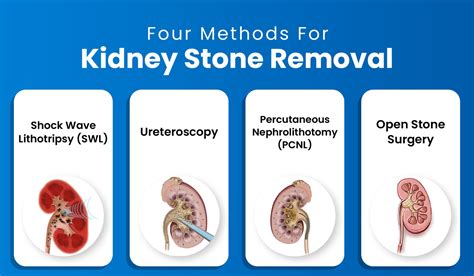Intro
Surgical removal of kidney stones involves procedures like lithotripsy, ureteroscopy, and nephrolithotomy to treat renal calculi, ureteral stones, and bladder stones, relieving symptoms and preventing complications.
The presence of kidney stones can be a debilitating and painful experience for those affected. These small, hard mineral deposits can cause severe discomfort, nausea, and vomiting, significantly impacting an individual's quality of life. While some kidney stones can be treated with medication and other non-invasive methods, others may require surgical intervention to remove the stones and alleviate symptoms. The decision to undergo surgery for kidney stone removal is a significant one, and it is essential to understand the importance of this topic and the various aspects involved.
Kidney stone surgery, also known as nephrolithotomy, is a medical procedure designed to remove kidney stones that are too large to pass through the urinary tract or are causing significant discomfort and health complications. The goal of this surgery is to relieve symptoms, prevent further complications, and restore normal kidney function. With advancements in medical technology and surgical techniques, kidney stone surgery has become a highly effective and relatively safe procedure, offering hope to individuals suffering from this condition.
The importance of understanding kidney stone surgery cannot be overstated, as it is a critical aspect of treating and managing kidney stone disease. By exploring the various aspects of this topic, individuals can make informed decisions about their treatment options and take proactive steps towards managing their condition. Whether you are experiencing symptoms of kidney stones or are simply interested in learning more about this topic, this article aims to provide a comprehensive overview of kidney stone surgery, including its benefits, working mechanisms, and key information related to the procedure.
Introduction to Kidney Stone Surgery

Types of Kidney Stone Surgery
There are several types of kidney stone surgery, each with its own advantages and disadvantages. Open surgery, also known as traditional open surgery, involves making a large incision in the abdomen to access the kidney and remove the stone. This type of surgery is typically used for larger stones or for patients with complex medical conditions. Laparoscopic surgery, on the other hand, involves making small incisions in the abdomen and using a laparoscope to visualize the kidney and remove the stone. This type of surgery is less invasive and typically results in faster recovery times. Percutaneous nephrolithotomy is a minimally invasive procedure that involves making a small incision in the back and using a special instrument to remove the stone.Benefits of Kidney Stone Surgery

Risks and Complications of Kidney Stone Surgery
While kidney stone surgery is generally a safe and effective procedure, there are potential risks and complications to consider. Some of the most common risks and complications include: * Infection: As with any surgical procedure, there is a risk of infection with kidney stone surgery. * Bleeding: Excessive bleeding is a potential risk of kidney stone surgery, although this is rare. * Kidney damage: There is a small risk of kidney damage during the procedure, although this is typically temporary. * Adverse reactions to anesthesia: Some individuals may experience adverse reactions to anesthesia, such as nausea or vomiting.Working Mechanisms of Kidney Stone Surgery

Steps Involved in Kidney Stone Surgery
The steps involved in kidney stone surgery may vary depending on the type of procedure being performed. However, the following steps are typically involved: * Pre-operative preparation: The patient is prepared for surgery by undergoing various tests and evaluations. * Operative procedure: The surgeon performs the surgery, removing the kidney stone and closing the incision. * Post-operative care: The patient is taken to the recovery room to begin the healing process, where they will receive pain management and other supportive care.Practical Examples and Statistical Data

Real-Life Examples of Kidney Stone Surgery
There are many real-life examples of individuals who have undergone kidney stone surgery and experienced significant improvements in their symptoms and quality of life. For example, a 35-year-old man who had been experiencing severe pain and discomfort due to a large kidney stone underwent laparoscopic surgery and was able to return to work within a few weeks. A 50-year-old woman who had been suffering from recurrent kidney stones underwent percutaneous nephrolithotomy and was able to reduce her risk of future kidney stones.Conclusion and Final Thoughts

What are the most common types of kidney stone surgery?
+The most common types of kidney stone surgery include open surgery, laparoscopic surgery, and percutaneous nephrolithotomy.
What are the benefits of kidney stone surgery?
+The benefits of kidney stone surgery include relief from pain and discomfort, prevention of further complications, restoration of normal kidney function, and improved overall health.
What are the potential risks and complications of kidney stone surgery?
+The potential risks and complications of kidney stone surgery include infection, bleeding, kidney damage, and adverse reactions to anesthesia.
We hope this article has provided you with a comprehensive understanding of kidney stone surgery and its various aspects. If you have any questions or comments, please feel free to share them below. Additionally, if you found this article informative and helpful, please consider sharing it with others who may be interested in learning more about this topic.
